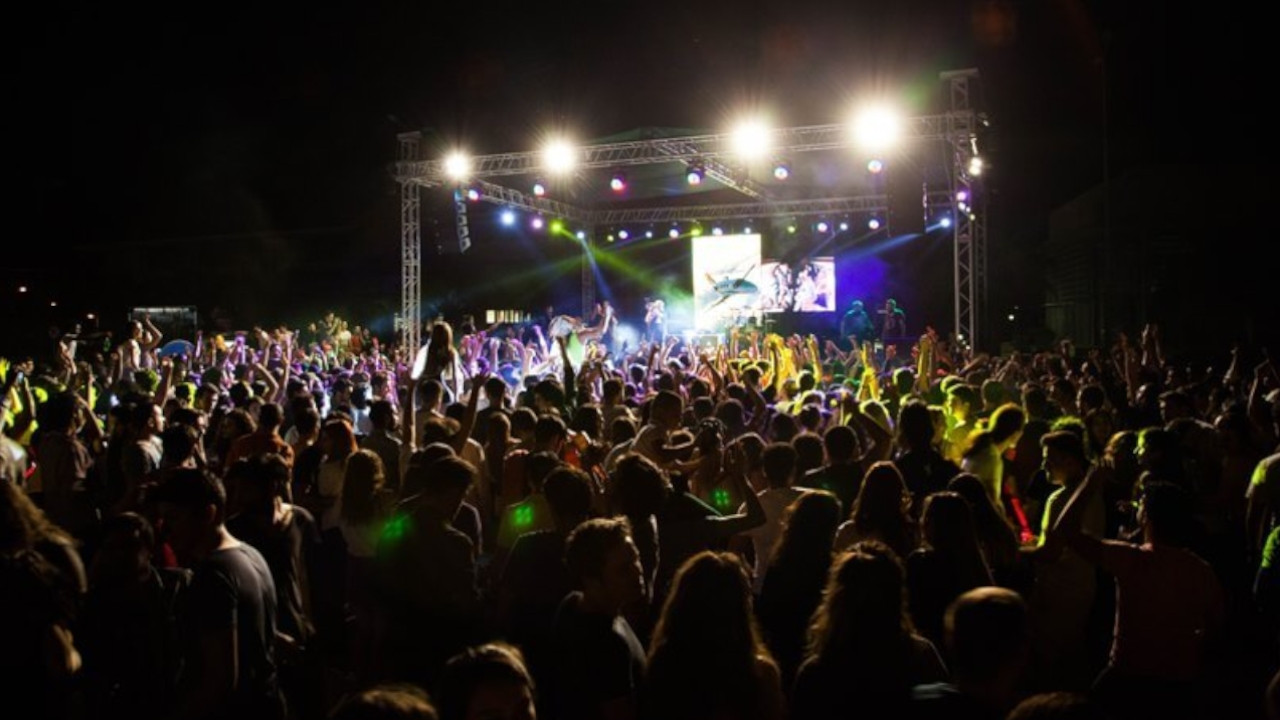Turkish institutions, artists make waves at the Venice Biennale
Under the Venetian sun, Penone’s wise tree, rooted in the Venetian waters with the weight of an old stone, becomes the symbol of this invitation. The old tree stands in the water with all its serenity. It carries the burden of humanity like Atlas, but also embraces the world with its branches as if it is protecting the world from us.
Hard times are not over for global festivals and biennales. Many of them cannot be held. In the 2000s, festivals, fairs, and biennales became hubs of the international art scene. At present, travel restrictions and public reluctance to crowds has led to a two-year pause. Book fairs are expected to open their doors in fall, though timidly. That is, if the pandemic wanes in Turkey and the world, and if a new wave does not knock us back down. The crème de la crème of the contemporary art world, the Venice Art Biennale, could not be held this year and was postponed to 2022. The event, held since 1895, had previously only stopped during the Second World War and was not held from 1942 to 1948. We hope that the biennale will recover and be restored to its former glory next year where Turkey’s Füsun Onur will attend with her works.
Still, the biennale world is not completely empty this year. The 17th Architecture Biennale that was to be held last year, but was postponed because of the pandemic, is being held in Italy this year. The 17th Architecture Biennale started on May 22. Its curator is Hashim Sarkis, and its theme is a highly appropriate question for our times: “How will we live together?”
This important event, which brings together global architecture and design circles, is less crowded this year, but all the pandemic precautions have been meticulously executed. Turkey is presenting at this year’s biennale via creative individuals and institutions contributing to the field. Four of the 114 participants invited by curator Hashim Sarkis, are familiar names in Turkey: Han Tümertekin, Pınar Yoldaş, Refik Anadol, and Gökhan Hotamışlıgil are contributing to this event via exhibitions. We have yet to have the opportunity to read and learn about what they are exhibiting, since no journalist or art critic from Turkey is participating in the event this year.
However, we have had the opportunity to see two important works, thanks to the online meetings held recently. The first of these works was about the Turkish Pavilion, which we follow every year with great interest. This year, an exhibition titled, “Architecture as Measure” was opened in the Turkish Pavilion, which was curated by Neyran Turan and coordinated by the Istanbul Foundation for Culture and Art (İKSV). Neyran Turan evaluates the global climate crisis from an architectural perspective. The exhibition, consisting of four dioramas (i.e. three-dimensional paintings), is a narrative of the future of the mines, quarries, damage to the globe and the imaginary or real inhabitants of the world. It is possible to visit the exhibition via a virtual tour, which curator Neyran Turan explains by saying, “It aspires to provoke a different engagement due to the suggestion of another kind of introspection for architecture.”
Another short but impressive Zoom meeting was organized by the Vuslat Foundation. Vuslat Doğan Sabancı summed up the foundation’s founding purpose in an invitation she sent before the opening: “As a former publisher, I worked diligently to champion and expand the space for freedom of expression. I have discovered at this stage of my journey, that listening, especially generous listening, has a transformative power for solving global problems. Consequently, I established two foundations. I will work to make the three-dimensional listening, that is, listening to ourselves, to each other, and to nature attentively, an indispensable part of our relations through the work of the Vuslat Foundation on a global scale and the V Foundation in Turkey.”
The Foundation is participating in the Venice Biennale as a project partner. It is also exhibiting an impressive work of art, its own inaugural project, in the biennale. The statue titled “The Listener” was created by the renowned Italian artist Giuseppe Penone and is a powerful work. At the opening, which was broadcast live online, Vuslat Doğan Sabancı emphasized the importance of listening to each other in order to find lasting solutions to our problems and said, “We call on people to listen not only to each other, but also to themselves and to nature. Only if you are a good listener to yourself and to nature, can you be a good listener to others.”
Under the Venetian sun, Penone’s wise tree, rooted in the Venetian waters with the weight of an old stone, becomes the symbol of this invitation. The old tree stands in the water with all its serenity. It carries the burden of humanity like Atlas, but also embraces the world with its branches as if it is protecting the world from us. This intriguing and poetic work has an even stronger visual effect on the viewer in the Venetian setting.
It seems as if there could not possibly be a better contribution than “The Listener” to this biennale which is themed, “How Will We Live Together?”
As a matter of fact, the biennale executives also indicated this in their opening speeches. Roberto Cicutto, who is in charge of the biennales in Venice, said, “The Vuslat Foundation is very important for us. This work combines contemporary art and architecture,” while Biennial Curator Hashim Sarkis began his speech by saying, “It wouldn’t be possible to have this biennale without the Vuslat Foundation.”
Sarkis also emphasized the intellectual contribution of the meetings they held with the foundation team and explained that the work titled, “The Listener” is in full harmony with its venue as it has an effect of combining everything.
Indeed, the “Listener” is located right in front of the historical shipyard sections in one of the most impressive parts of The Venetian Arsenal (Arsenale di Venezia). It is not difficult to imagine how this work became one of the symbolic works of the Biennale. Most importantly, a Turkish institution has chosen the Venice Architecture Biennale to step into the global scene and show that it has the vision to allocate resources for this kind of international art event. I think this endeavor should be underlined for its exemplary attitude and approach.


 A stolen youth: Eurovision, spring festivals, and concertsWorld
A stolen youth: Eurovision, spring festivals, and concertsWorld